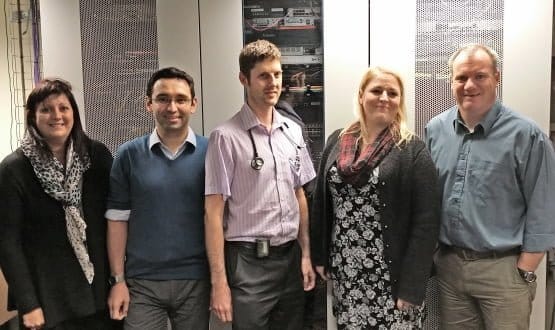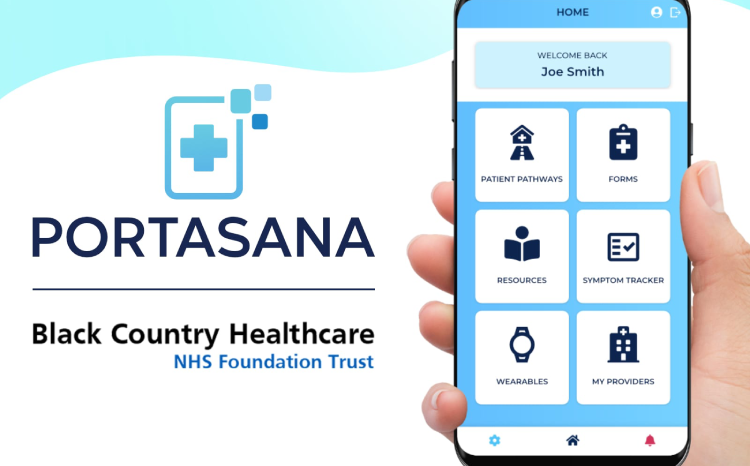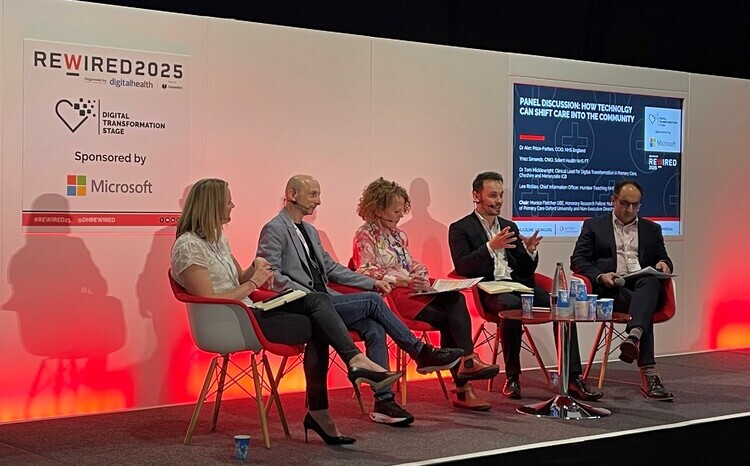CCIO profile: Bolton’s team
- 20 January 2015

In some ways, it seems only appropriate that Bolton NHS Foundation Trust has not one chief clinical information officer, but a multidisciplinary team of four.
After all, the trust is an integrated care organisation. As well as hospital care, it provides a variety of services in the community.
Yet to say the approach is an appropriate one does not really adequately convey its significance, or Bolton’s belief in its value. Nor does it communicate its comparative rarity, particularly in a trust which – as its CCIOs admit – is far from advanced when it comes to the use of IT.
Good – but can Bolton prove it?
“Although clinically Bolton is excellent – and I’d wanted to work here for many years – from a IT point of view it’s very immature,” explains David Haider, a consultant ophthalmologist who spent about a year as a informal CCIO before his official appointment in August.
He says it was that realisation which led him to the CCIO post. His CCIO colleagues tell similar stories about how they came to the role: there is talk of frustration about opportunities missed. But what is interesting is the subtly different perspectives on those opportunities.
For instance: Simon Irving, a consultant in acute medicine, reports fears that poor documentation and coding means the trust’s excellent clinical performance is not reflected in its Summary Hospital Level Mortality Indicator (SHMI). “We don’t sell ourselves well enough,” he worries. “We don’t do ourselves justice.”
His fellow CCIO Phillipa Winter has also been seeking data to prove the value of work done at the trust. As therapy manager for the elective care division, however, her specific focus is different.
“In my previous role, I was business and information manager for therapy services and it was my role to develop our activity and outcomes data,” she explains.
“So that got me interested in the idea that we needed to show our performance and efficiency. I started to work with the IT department quite closely and got a real passion for how we could prove our worth.”
One aim, different perspectives
In other words, both are trying to do the same thing but coming at it from a different perspective. Brendan Lane, their CCIO colleague and a charge nurse in A&E, says this sums up the dynamic of the CCIO team: same aims, different angle.
“I’ve yet to see a significant disagreement among us,” he reports. “We might have different ideas and slightly different priorities, but we all trying to move the trust forward to an electronic patient record, which we believe would help every single one us.”
It is an idea on which Simon Irving builds. “An EPR is a multidisciplinary team tool. Everyone uses an EPR. So can just a doctor represent nursing staff and therapies accurately? The strength of this team approach is that we’ve got different people representing different areas and different inputs into what will be the multidisciplinary team EPR.
“Hopefully, as we move forward, the end users – whichever department they are in – will feel they have somebody who they can approach with any issues or ideas they have with the EPR.
“This isn’t going to be something owned by a doctor, or owned by a nurse, or owned by therapy. It’s going to be joint ownership, and I think that joint representation is vital to the success of the project.”
Mutual support
Irving and his colleagues credit the team setup to their chief information officer. Rachel Dunscombe, who joined the organisation in 2013 and pushed for the four substantive appointments, firmly believes the approach “ensures we’re making the right decisions for the trust.”
“If you think about the board of a trust, it needs to have a healthy tension between members. I think it’s the same with the clinical representation in informatics: there needs to be a healthy tension between all of the clinical areas, the disciplines – community, acute, all the aspects.”
She continues: “I think the really exciting thing about this team is that it’s multidisciplinary. It’s got all the checks and balances within it. There’s healthy debate in the team, but also mutual respect. They are learning together, and reinforcing and supporting one another as well.”
Its members say that is crucial. Yes, they believe the major strength of the team approach is the multiple perspectives they bring to problems. But they also admit there’s an element of safety in numbers.
“As clinicians we’re really very new to having any role at all with having a say in IT,” points out Haider. “So the shared knowledge and shared risk of this team is very reassuring. I can’t offer half the things we need as an individual, and the others may face a similar thing.
“In a trust that’s never really had any clinicians involved in IT, it feels very secure to go from nothing to a group that’s potentially going to be fairly instrumental in bringing a lot of change.
“To be able to do that together and learn from each other is for me a very big draw to it. I wouldn’t have even looked to do this in a much smaller group or with more of the personal responsibility.”
Making a difference
Clinical engagement in IT may still be a relatively new concept at Bolton, but those leading the charge are confident it is already making a difference. Dr Irving gives an example of a proposed addition to the trust’s bed management system.
“Brendan and I recently became aware of a coding module for A&E that we could slot into the system. This was a very good example of how I think a CCIO team can work, because managers just wanted to go out and buy it.
“But we flagged it up with the IT team and we basically ensured that a demonstration was given to the end users to make sure that it did what they wanted it to do.
“What we found out was that we were going to need a few tweaks to the system, and that is now being negotiated in the contract to make sure that it will work for the end user. Whereas before the CCIOs were in post, this would have just been bought and imposed on them.”
Dunscombe has little doubt of the value of such interventions. “Where CIOs have failed in the past is that they could never be a babel fish between the clinical and the technical,” she argues. “But if you get a proper multidisciplinary set of CCIOs that have been allowed to learn to become intelligent clients, they do bridge the IT and the clinical world.
“We’re training everyone up here, giving them the opportunity to do Prince 2 and so on, so they speak the common language and understand the frameworks. So I think CCIOs will get to a level of knowledge where they really will be the linchpin in the healthcare informatics community.”




